Enter
the Matrix
Extreme patching met 12 dual-oscillator voices in one of the most prestigious keyboard synths of the ’80s.
With 27 modulation sources, 47 destinations, 15 filter modes, and five envelopes, it combined the flexibility of a modular synth with the polyphony and programmability demanded by artists like Toto, Vangelis, Prince, and Herbie Hancock. How do you improve upon such an instrument? Matrix-12 V balances absolute authenticity with the flexibility modern music makers need - and then some.
You Can’t Sample This
Our True Analog Emulation® technology models the behavior of every circuit and how they interact. Matrix 12-V is one of its biggest achievements yet.
Your Everything Synth
Whether you make power-pop, electronica, R&B, hip-hop, or a fusion of styles yet to have a name, Matrix-12 V delivers head-turning sounds with remarkable ease.
An Ace in Your Hand
The Matrix could sound like virtually every other analog polysynth of the ’80s — and some digital synths — but no other synth could sound like the Matrix.
Own a Legend
A working Matrix-12 fetches five figures if you can find one. Matrix-12 V offers perfect accuracy at a tiny fraction of the cost, and with modern stability.
Analog in
a digital world
With digital synths like the DX7 and affordable sample-based keyboards just over the horizon, Tom Oberheim and company set out to show the world what a no-holds-barred analog machine could really do.
Echoing Oberheim’s earlier success with the SEM, the project began with a sound expansion module. This was 1984’s Xpander, which had six voices and the same signal path as the Matrix-12, which would arrive just a year later.
MIDI created a market for modules that could augment the capabilities that synth players already owned without adding the bulk of another black-and-white keyboard to their rigs. The Xpander was designed by engineers Marcus Ryle (who would later invent the Alesis® ADAT) and Michael Doidic, and became an instant hit.
Discover the history of Matrix-12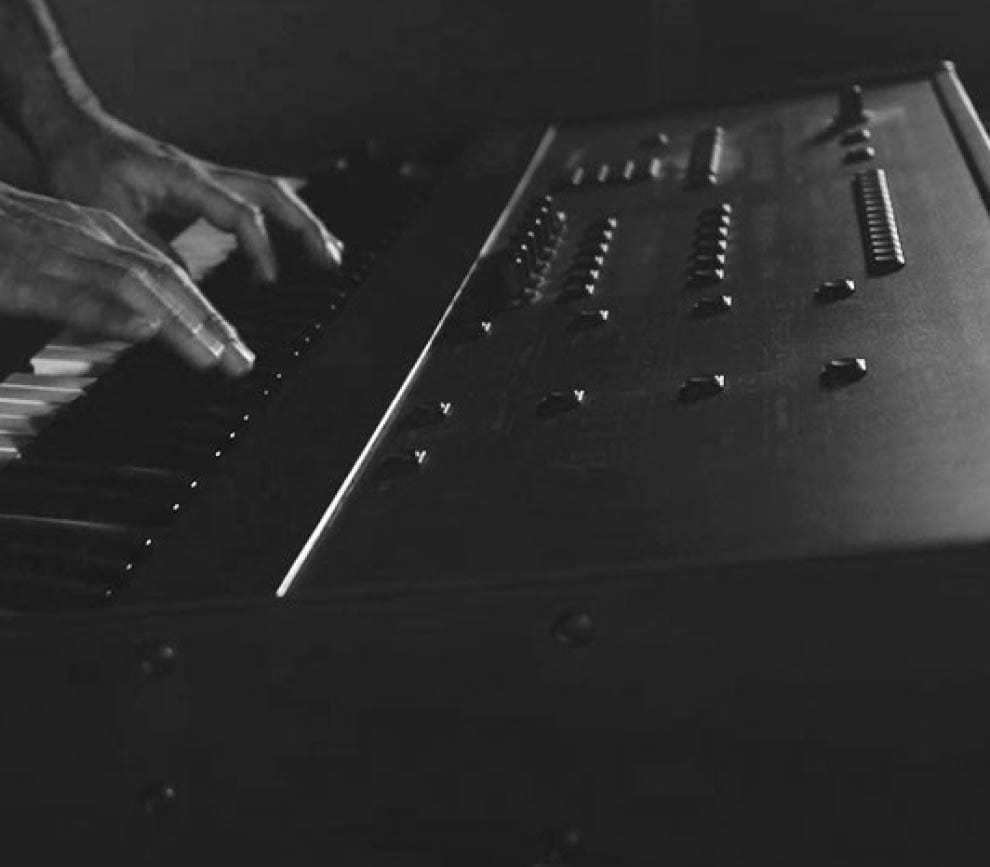
Agent
of analog
Matrix-12 V puts your hands on more of the original’s parameters at once.
It’s a playground for quick tweaks during live performance and exacting sound design in the studio.
Because it applied digital control to analog tone generation, the Matrix-12 had three displays and many pages of functions but only six knobs. We thought a sound engine this sensational deserved a lot more.
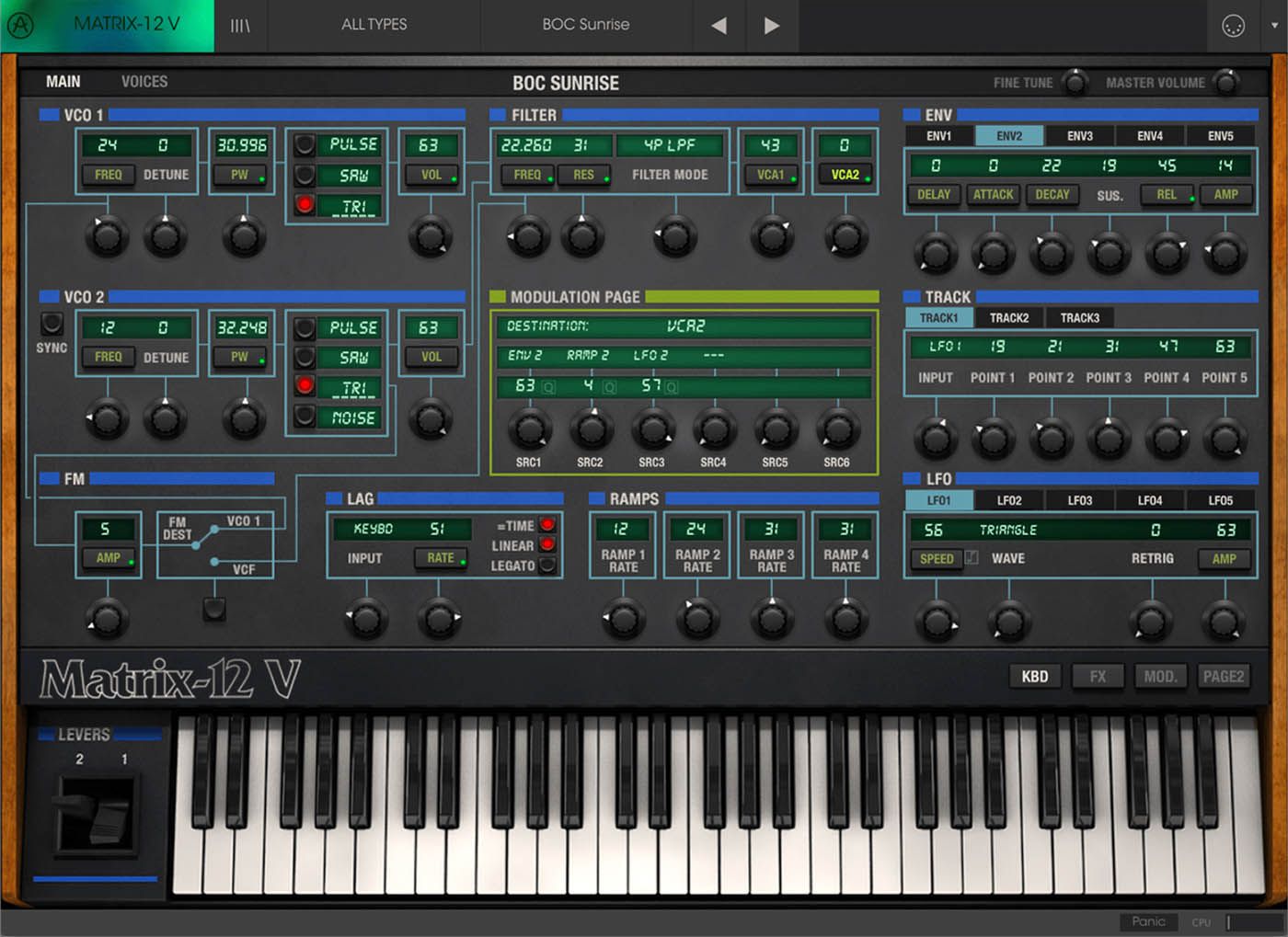
_1
_2
_3
_4
_5
_6
01. Original Oscillators
We began with faithful models of the oscillators, which feature pulse, saw, and triangle waves, PWM, hard sync, FM, and noise.
02. 15 Filters in One
That’s right — multiple pass modes, multiple slopes, and even phase-shifting filters let the Matrix create tones other analog synths can’t.
03. Pushing the Envelope
Why settle for just volume and filter envelopes when you can have five assignable ones? Create sounds that evolve in interesting and unexpected ways.
04. LFO Flexibility
Explore 5 tempo-syncable LFOs ready to apply to anything - and that’s just the tip of Matrix-12 V’s modulation iceberg.
05. Modulation Central
Press any parameter’s button to see all the sources that modulate it, and work with up to six sources at once.
06. Ramp It Up
Four ramp processors are like extra one-stage envelopes you can apply to any signal.
Matrix
Reloaded
More modulation, built-in FX, and a powerful Multi mode make you the architect of amazing sounds.
We dove deep into what makes the Matrix-12 special, put every parameter of it within easy reach, and then freed its analog mind with some reality-bending upgrades.
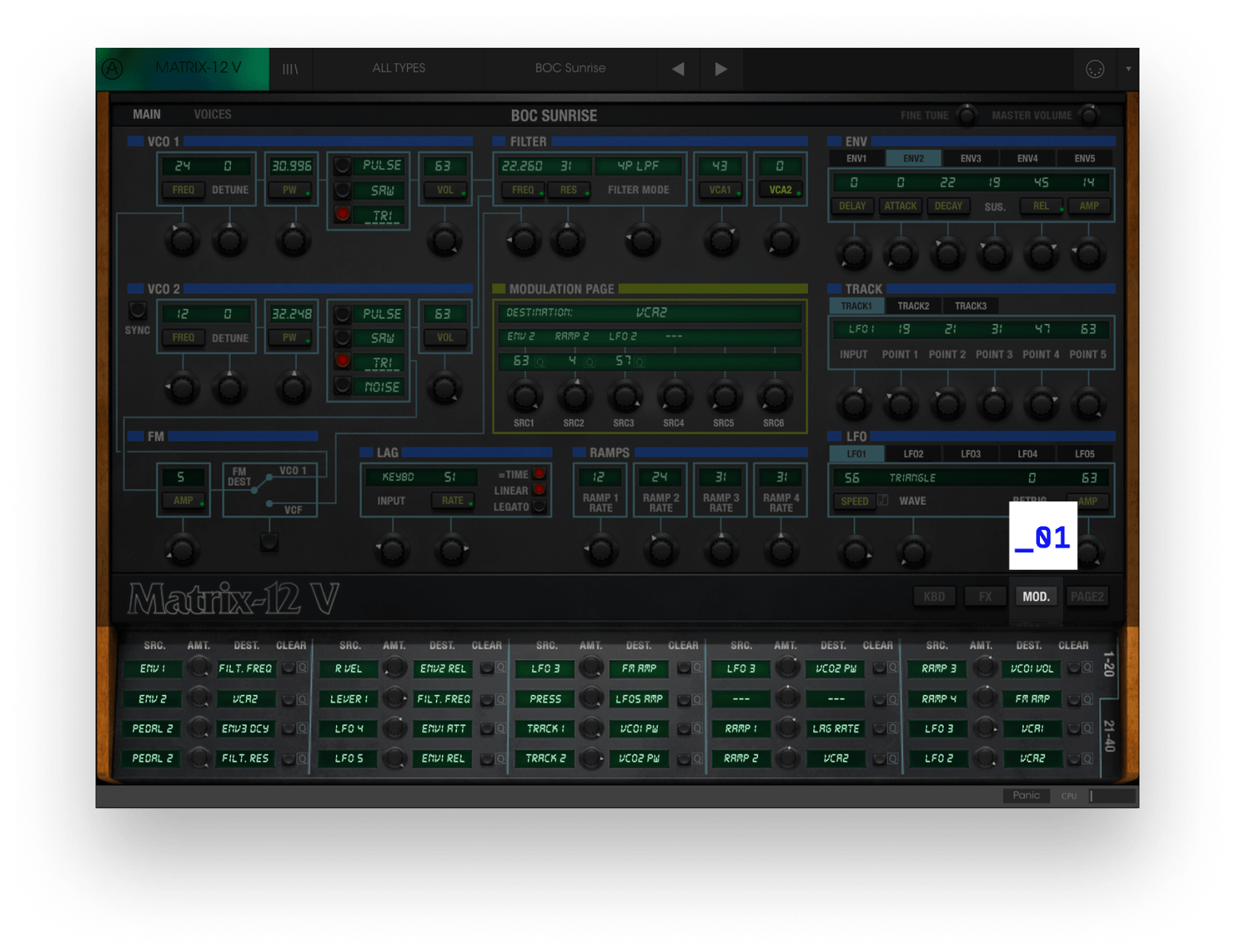
Tweak a superhero’s eye view of every modulation routing in Matrix-12 V at once. With up to 40, you’ll never run out of them.
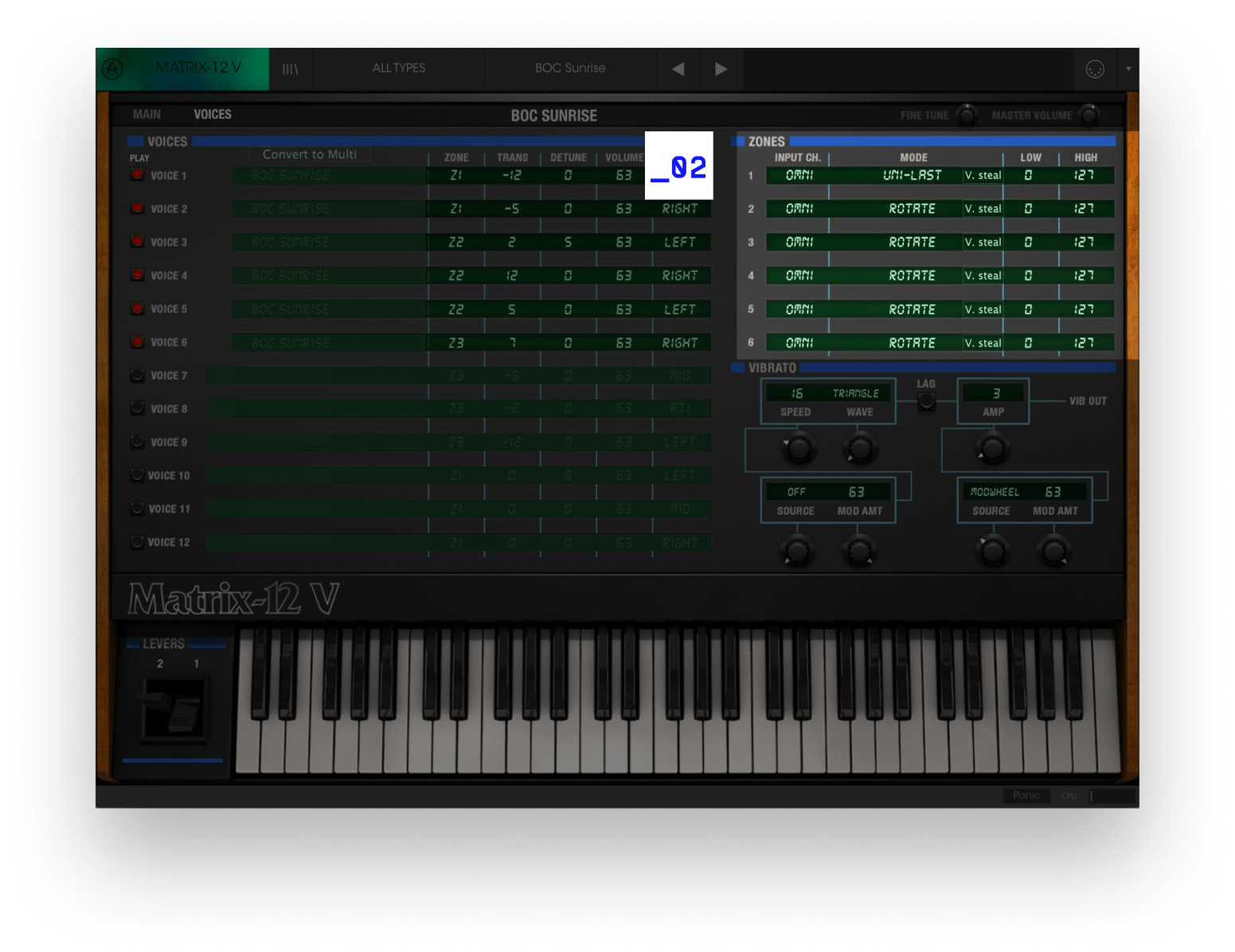
Splits or layers? How about six independent keyboard zones with adjustable range, MIDI channel, and voice allocation?
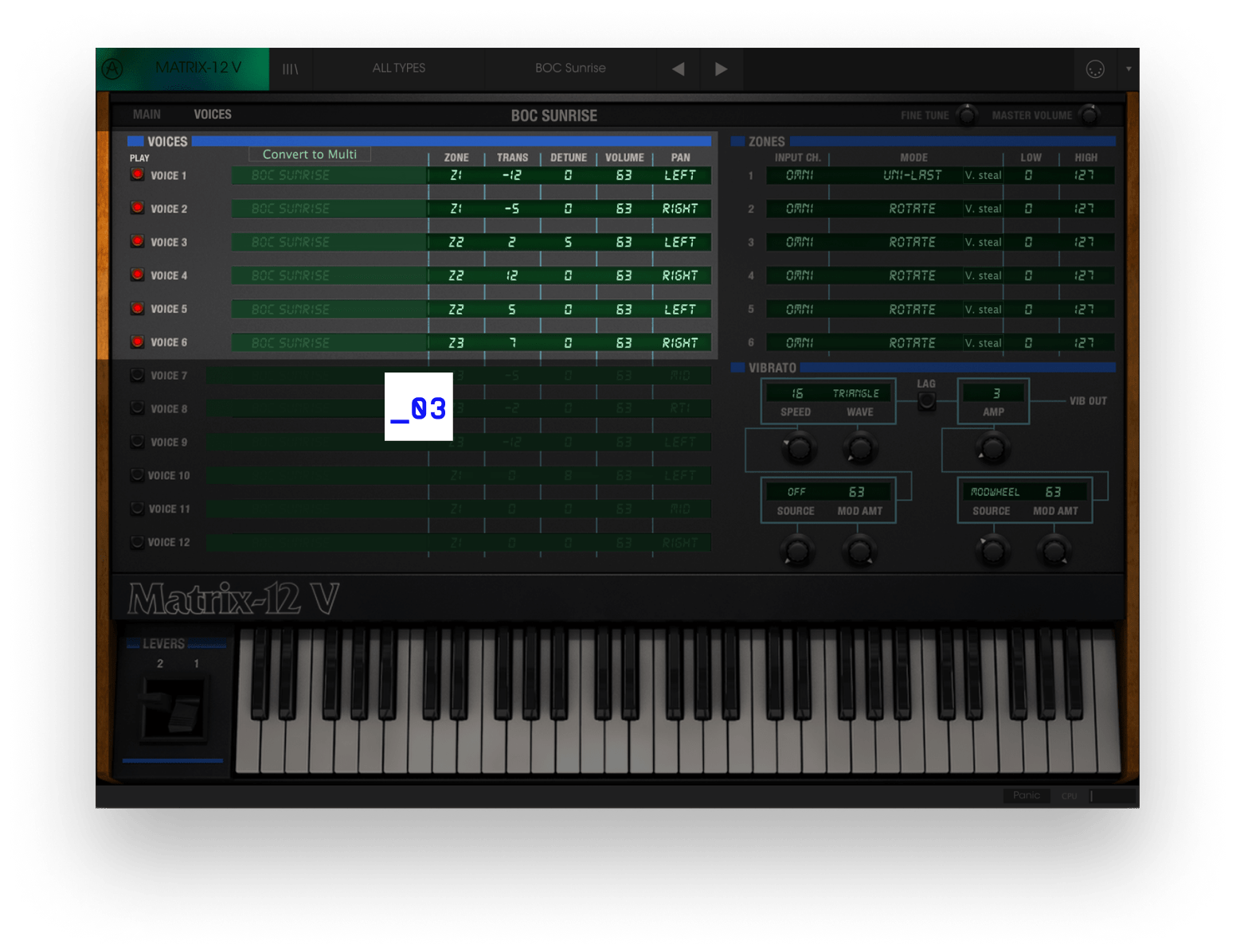
Assign Matrix-12 V’s voices to keyboard zones and transpose, detune, and pan them here. Each voice can play a different patch if you want!
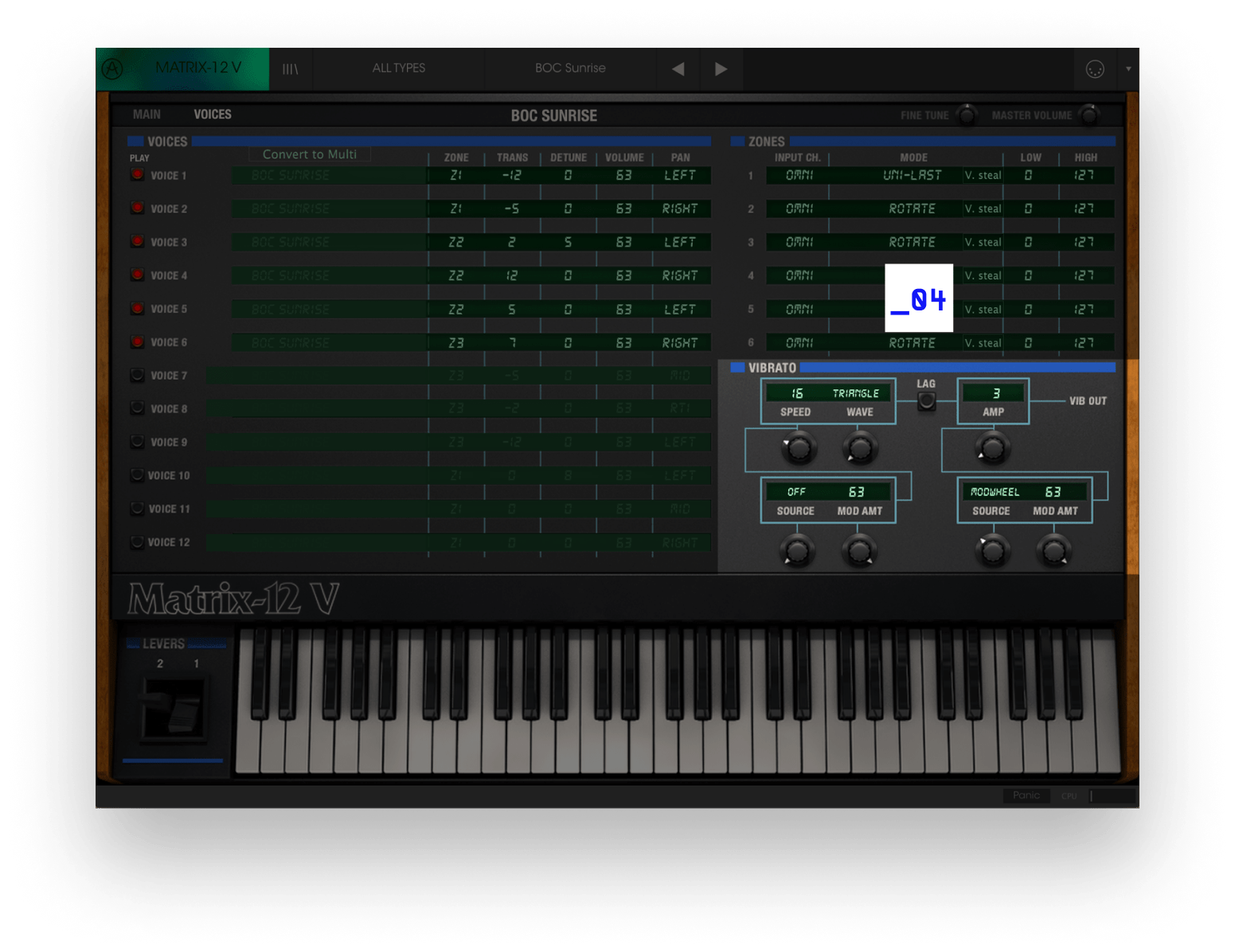
As if five LFOs weren’t enough, an independent vibrato lets you modulate its speed and amount from the mod wheel, a pedal, or aftertouch.
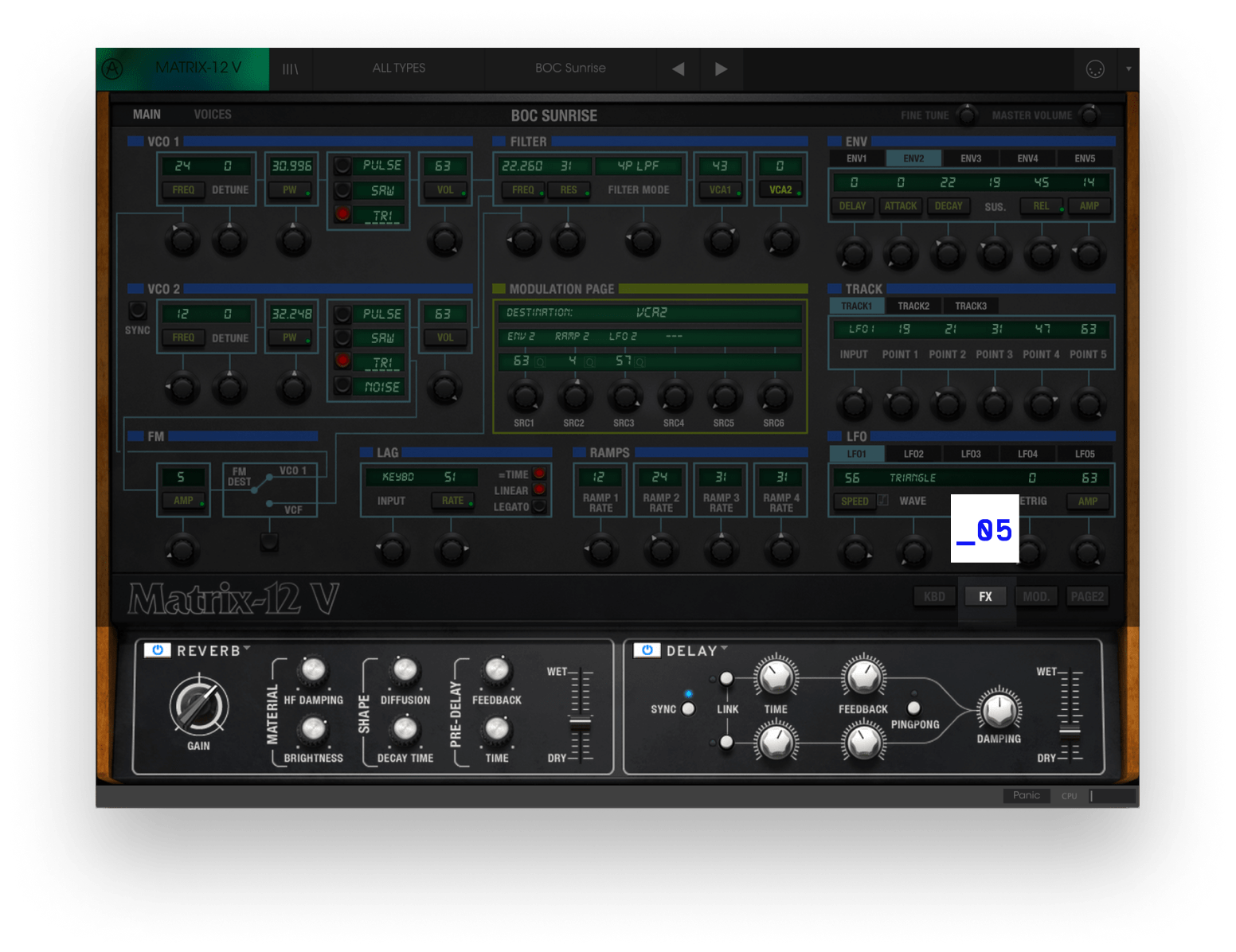
Choose from studio-grade classics including phaser, flanger, chorus, analog delay, stereo ping-pong delay, and lush reverb.
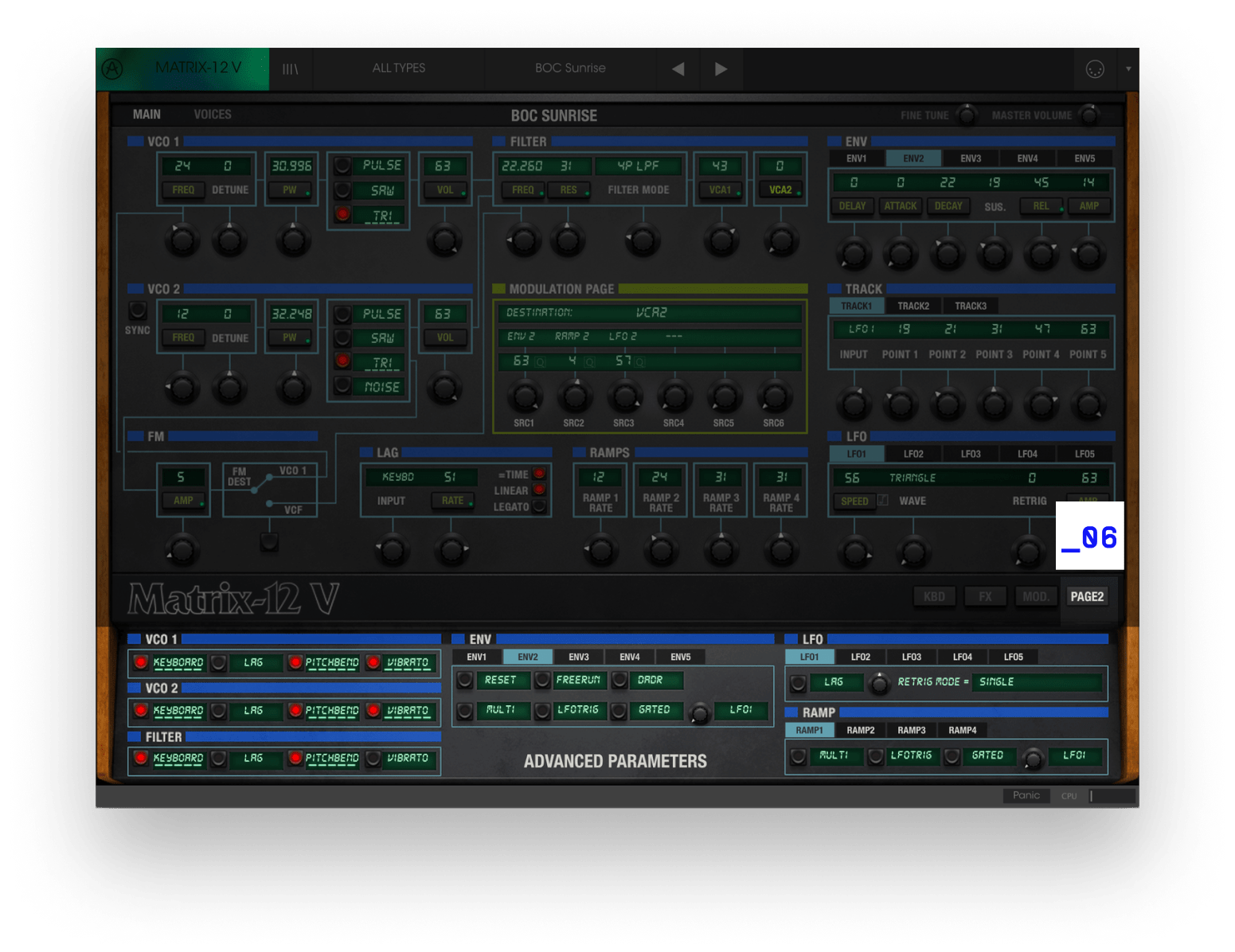
Achieve electron microscope level control over Matrix 12-V’s behavior with the settings located on Page 2.
Hear it
in action
Journey from the neon-lit streets of the 1980s to off-planet colonies and beyond with these audio demos from our community of artists and sound designers, made exclusively using Matrix-12 V sounds.
Escapes
In The Matrix
Selecting Presets
Trap
Rifts
A downtempo track with strong eerie feeling, taking advantage of the various filters modes, on board effects and voice parameters to fill the stereo width and audio spectrum.
Sunset
This minimalist demo features a light lead, the "Mountain Echo" preset, and a filter glide effect which take you to an other dimension.
Brian Molo
Artistscorner

Included in
V collection
Legendary Keyboards Reinvented
This instrument is also part of the V Collection -your complete dream line-up of the legendary synths, organs, pianos and more that made keyboard history. They’re modeled with the most advanced technologies for authentic realism, and enhanced with new creative options. Whether you use it as DAW plugins in the studio or standalone at gigs, V Collection puts the greatest keys of all time at your fingertips for instant inspiration.
Learn More
The features
you need

Integrated in-app tutorials guide you through every aspect of the instrument, from individual parameters to tips from our sound designers, so you can focus on the creative stuff. It shouldn't be this easy, but it is!

Arturia Software Center lets you download, organize, and update all of your Arturia software titles in one place, as well as manage all of your licenses across multiple devices. Keep it simple.

Our virtual instruments and plugins are designed to fit right into your setup without hassle. Whatever your style, you can explore sound while enjoying full compatibility with major DAWS, on both Windows and MacOS.

Instantly find the sound that’s in your head with intelligent & streamlined preset browsing. Search with keywords, explore by instrument type, musical style, and more - you can even save your favorites to quickly recall later.

Whether you want the full visual immersion of our classic instrument emulations, or to save precious screen real estate, the interfaces for all of your Arturia virtual instruments can be resized to a scale that suits you.

Instruments come seamlessly mapped for the Arturia KeyLab range - but they’ll place nice with other MIDI controllers too. Instant sound tweaking macros, easy DAW integration, and standalone operation.
TAE® Powered
The exclusive analog modeling technology that makes our emulations indistinguishable from the originals.
By accurately mimicking the characteristics of analog oscillators, filters, and soft clipping, we can provide astonishing component-accurate detail and authentic analog charm in equal measure.
Learn more
Gallery
Main Features
Two oscillators, each offering triangle, sawtooth and variable-width pulse wave with PWM.
Oscillator 2 also functions as a white noise generator.
Oscillator 1 or the Filter can be frequency modulated.
Single filter with 15 modes: 4 Low Pass, 3 High Pass, 2 Band Pass modes, Notch and Phase Shift plus four additional "combo" filter modes.
Ultra-powerful modulation matrix with 27 sources and 47 destinations.
Sources include 5 envelopes, 5 LFOs, 4 Ramp, 3 Track generators, Velocity, Pressure, Keyboard follow, and more.
Two insert effect slots with six studio-grade effects available.
12 voices of polyphony like the original instrument
Multitimbral
Works in Standalone, VST, VST3, AU, AAX.
Platform specifications
Windows
- Win 10+ (64bit)
- 4 GB RAM
- 4 cores CPU, 3.4 GHz (4.0 GHz Turbo-boost)
- 3GB free hard disk space
- OpenGL 2.0 compatible GPU
- ARM processors not supported on Windows
Required configuration
- Works in Standalone, VST, AAX, Audio Unit, NKS (64-bit DAWs only).




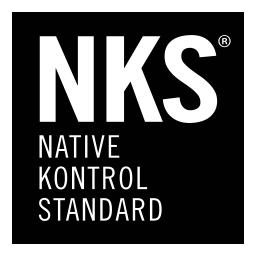
Apple
- Mac OS 11+
- 4 GB RAM
- 4 cores CPU, 3.4 GHz (4.0 GHz Turbo-boost) or M1 CPU
- 3GB free hard disk space
- OpenGL 2.0 compatible GPU
Work with ASC
- An elegant and simple solution to help you install, activate, and update your Arturia software instruments.
All manufacturer and product names mentioned on this page are trademarks of their respective owners, which are in no way associated or affiliated with Arturia. The trademarks of other manufacturers are used solely to identify the products of those manufacturers whose features and sound were studied during the development. All names of equipment, inventors, and manufacturers have been included for illustrative and educational purposes only, and do not suggest any affiliation or endorsement by any equipment inventor or manufacturer.
Oberheim® is a registered trademark of Tom Oberheim®, which is in no way associated or affiliated with Arturia. All manufacturer and product names mentioned on this page are trademarks of their respective owners, which are in no way associated or affiliated with Arturia. The trademarks of other manufacturers are used solely to identify the products of those manufacturers whose features and sound were studied during the development. All names of equipment, inventors, and manufacturers have been included for illustrative and educational purposes only, and do not suggest any affiliation or endorsement by any equipment inventor or manufacturer.







